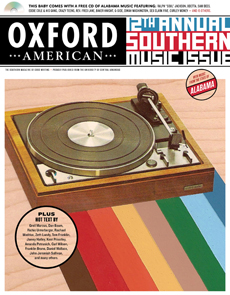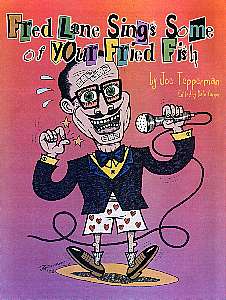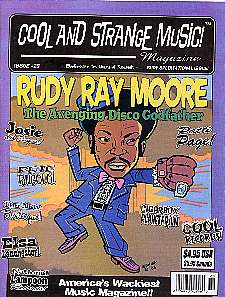|
ICEPICK TO THE MOON trailer from Skizz Cyzyk on Vimeo.
The long-awaited documentary by Skizz Cyzyk about stripmine crooner Rev. Fred Lane and the Raudelunas arts community he came from premieres on April 7, 2018 at the Chattanooga Film Festival. The film is slated to be screened in San Francisco in June. Check theIcepick to the Moon Facebook page for updates.
"ICEPICK TO THE MOON, which will make its world premiere at the festival, centers on cult following of the obscure, strip-mine crooner Rev. Fred Lane. His obsessive fans, who have described him as “subversive,” “completely satirical,” “the Dada Duke Ellington,” and “Demon Frank Sinatra,” have spent years examining every detail of Lane’s albums, and yet whatever information they have found out about their hero has led them deeper into blissful confusion. ICEPICK TO THE MOON not only examines the cult of Fred Lane fans, but it also pulls the curtain back on the artist who is Fred Lane, from his early involvement in the Raudelunas arts collective of Alabama in the 1970s to his current occupation making whirligigs to sell on the craft show circuit. Following the screening will be a Q&A with director Skizz Cyzyk." Icepick to the Moon Facebook Page Film information and production diary IMDb film information for Icepick to the Moon Raudelunas.com is undergoing its first update since going online. We are in the process of migrating content on the previous site, and plans are underway to add new images and documentation.
Rubber Room, by Rev. Fred Lane and Ron 'Pate's Debonairs" was included on the Oxford American Southern Music CD that accompanies the 12th Annual Southern Music Issue.. The disk features overlooked music from Alabama, and the magazine includes an article of each of the 27 pieces on the disk, including a five page spread on Fred Lane and the Raudelunas collective penned by Lee Shook. "This is one of the best-researched pieces on our music to appear in print," said band leader Ron 'Pate. Rubber Room was included on From the One That Cut You, which is currently out of print. The magazine is on newsstands through February 2011 or can be ordered directly from Oxford American.
"One of the least known and most unusual albums of its time - from Alabama no less!" - Jello Biafra Review by Ed Baxter from The Wire magazine's "100 Records That Set The World On Fire" (Issue 175: Sep 1998):
Ron 'Pate's Debonairs featuring Rev Fred Lane Raudelunas 'Pataphysical Revue (SAY DAY BEW RECORDS 1977) A document of a single evening in the university town of Tuscaloosa, Alabama, March 1975, at the Second Raudelunas Exposition. Dominating proceedings is Fred Lane, towering alter ego of flautist and whirlygig sculptor Tim Reed, who comperes with a series of hilarious lateral jokes and weird monologues. His cover versions of "Volare" and "My Kind Of Town" backed by Ron 'Pate's Debonairs - a hot, swinging, meandering big band - set new standards as melody gives way to controlled, impassioned and deeply humorous improvisation. This monumental work also features Anne LeBaron's superb "Concerto For Active Frogs"; Mitchell Cashion's charming setting of Julius Caesar's "The Chief Divisions Of The Peoples Of Gaul"; Industrial noise from The Captains Of Industry; and wild Improv combo The Blue Denim Deals Without The Arms. No other record has ever come as close to realising Alfred Jarry's desire "to make the soul monstrous" - or even had the vision or invention to try. It's all over the place. The sleeve notes describe it as "the best thing ever" - time has not damaged this audacious claim. From Cool and Strange Music #28 |
Ron 'Pate
Archives
March 2018
Categories |
Proudly powered by Weebly





 RSS Feed
RSS Feed